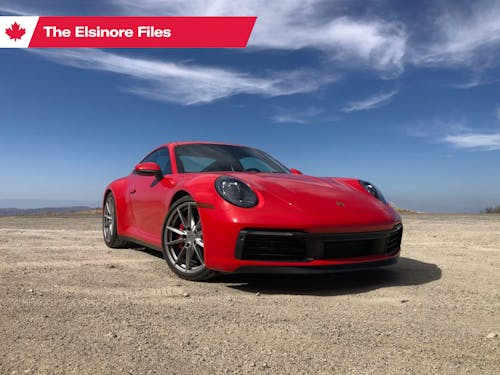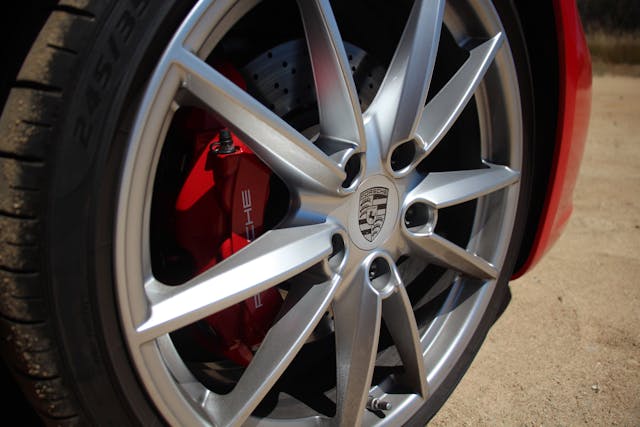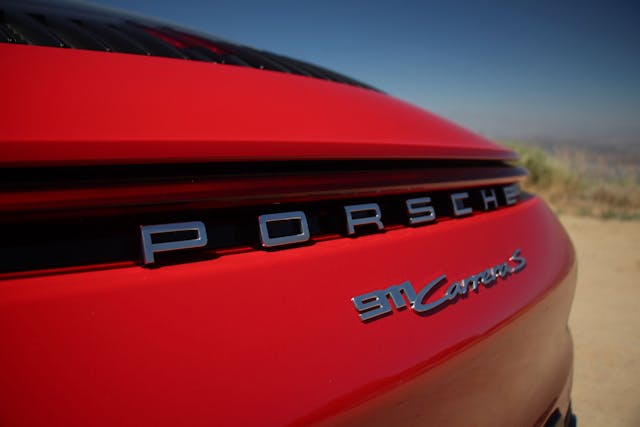Of modern 911s and manual gearboxes

When I learned I was scheduled for a few days in Porsche’s new 992-gen 911, I was expecting it to be finished with the effective and efficient Porsche-Doppelkupplungsgetriebe, but I was pleasantly surprised to discover it was going to be a low-option, sunroof-delete, manual-transmission-equipped 911 Carrera S.
Among its contemporaries, the 911 is one of a handful of sports cars still offered with a three pedal option. Some manufacturers may offer manuals, if only to placate a small, vocal group of enthusiasts, and they tend to treat such ‘boxes like afterthoughts.

I can appreciate that Porsche would offer manuals in its specialty cars. Models like the GT3, GT4, Speedster, and Spyder deserve well-engineered, six-speed gearboxes, no doubt, but it’s surprising to me that Porsche would offer a manual in the standard 911 range. Given the way performance car technology has developed, and how fewer buyers are demanding to shift on their own, it doesn’t appear that manual gearboxes have a home in modern sports cars.

I’ll confess that the 997-generation is my favorite for its mélange of old and new 911. It possesses brilliant steering feel and feedback, as well as clear communication from the chassis. Plus, you can drive it like a classic 911, leveraging the mass of the flat-six at the rear of the car to create some pendulum effect from time to time. A 997 simply is the intersection of the most joyful elements of old and new 911s. The later 997s in particular rolled into showrooms with pleasantly modern brake, suspension, and tire technology, were relatively powerful, and yet unburdened with the weight and dimensions of the later cars.

It’s not that newer 911s are much longer (they’re not), but they are a couple of inches wider than the 997. It is, however, the four inches added to the wheelbase that make them more approachable than the older cars. The downside is that those four inches of refinement come at the cost of liveliness.
As it turned out, my first Porsche tester was a PDK-equipped 997.2 Carrera 4S that I drove from Los Angeles to Monterey, California, so that I could race Mazda MX-5s at WeatherTech Raceway Laguna Seca with Jack Baruth. (The racing is another story for another day.) It was on that drive, wheeling that 997, when I learned to appreciate the PDK. At the time, the technology was astonishing. A pair of clutches that deliver up- and downshifts in the blink of an eye? Repeated launch-control starts? But of course you can have it all, dear Porsche customer.
Later, I enjoyed PDKs in the range of Porsche models and took my father for memorable ride that included one dual-clutch launch control experience in a 911 Turbo S. The weather and road surface conditions had aligned on that sunny summer’s day and we hit 60 miles an hour in well under three seconds. He declined any subsequent tries.

My favorite Porsche production car remains the legendary 997 GT3 RS 4.0; the wheel time I spent in those cars on Australian and German roads is forever etched into my memory. That four-liter Mezger and its slick six-speed manual made for sports car perfection. Plus, hitting my personal Vmax on the Autobahn in the 4.0 had nothing to do with shaping my opinions about 911s.
But what of the regular 911? In the age of tech- and luxury-laden cars, surely Porsche’s iconic sports car isn’t immune from receiving unnecessary servings of extraneous features and functions. A quick stroll through the 911’s expansive options list finds some profane choices: A remote parking assistant and some serious Level 2 advanced driver assistance functions.
Living in a large city, I can appreciate how this kind of tech can trickle down into the 911. That machine we’re discussing here remains perhaps the most broadly usable sports car with an unparalleled blend of utility, performance, and exclusivity. It meets the daily driving requirements for many drivers, some of whom appreciate adaptive cruise control and some level of assistance during traffic jams. I know I do, but I also know I don’t want my 911 to do those things for me.
This brings me to that new Carrera S I drove recently with its seven-speed manual. It’s a significant departure from the 991 and I reckon Porschephiles will soon overlook 991s as they did 996s for so many years. The 991 always struck me as an exercise in evolution for evolution’s sake.

The 992 could have followed in its older brother’s footsteps and gotten longer, wider, and heavier, but based on my first taste, it’s a delightful, contemporary sports car that benefits from modern engineering. It’s relatively lightweight and is powered by a turbocharged, flat-six that seems to provide the best of both worlds.
With maximum torque available at low revs and across much of the rev range, abundant torque is always available, much like every other turbocharged engine coming out of Germany. However, it makes its peak 443 horsepower at a lofty 6500 rpm that rewards you every time you let a gear run the engine to redline, just like a classic 911. Plus, it retains that mechanical melody that distinguishes it from all other sports cars.

The seven-speed manual gearbox in the new Carrera S is a bit of an odd duck. Second gear is as long as the Mississippi and runs out at 76 mph, but with the torque curve of the turbocharged engine, second quickly becomes your around-town friend.
At the other end of the gearbox, sixth’s ratio is perfectly suited for freeway cruising, making that seventh cog completely extraneous, and I found that I used it more out of curiosity than necessity.

Otherwise, the 992’s manual gearbox is thoroughly enjoyable to row, the gates are well defined, the throws short and positive. The clutch has great feel and actuation. For what amounts to a low-volume transmission, Porsche has delivered a product that is still thrilling to drive. Sure, there’s rev matching for those among us unwilling to learn the art of the heel-and-toe downshift, but it’s switchable.
The rest of the Carrera S is exactly what you’d expect from the latest 911. The cabin is comfortable and compact. The new dashboard is jarring at first, but after a few miles, you come to appreciate its simplicity. The wheel and instrument cluster are decidedly modern interpretations of the classics, and while the gauges look like five rings, they’re digital displays, save for the central analog tachometer.

In due course, I’ll try a 992 with the PDK, but this Guards Red tester is a persuasive argument that modern Porsches still need manual gearboxes and, as I understand, one out of every four or five 911 buyers orders a three-pedal car.
One of the most important considerations with this new 911 is that when you specify yours with a manual gearbox, you cannot add the driver-assist tech. It’s PDK-only if you desire those remote park assist and adaptive cruise control options.
That, my friends, is the way it should be and I’m glad Porsche still makes a modern, three-pedal 911.

